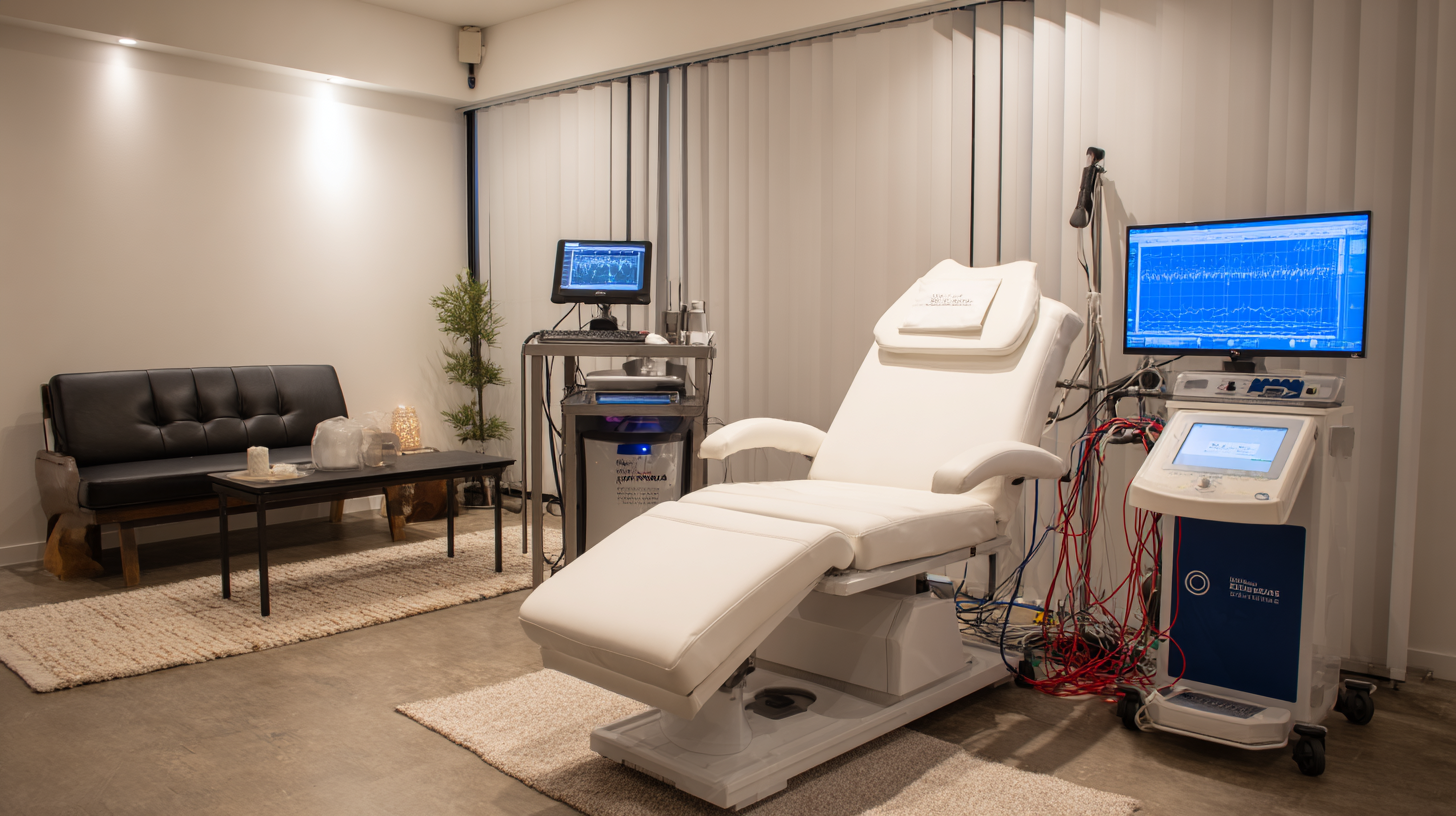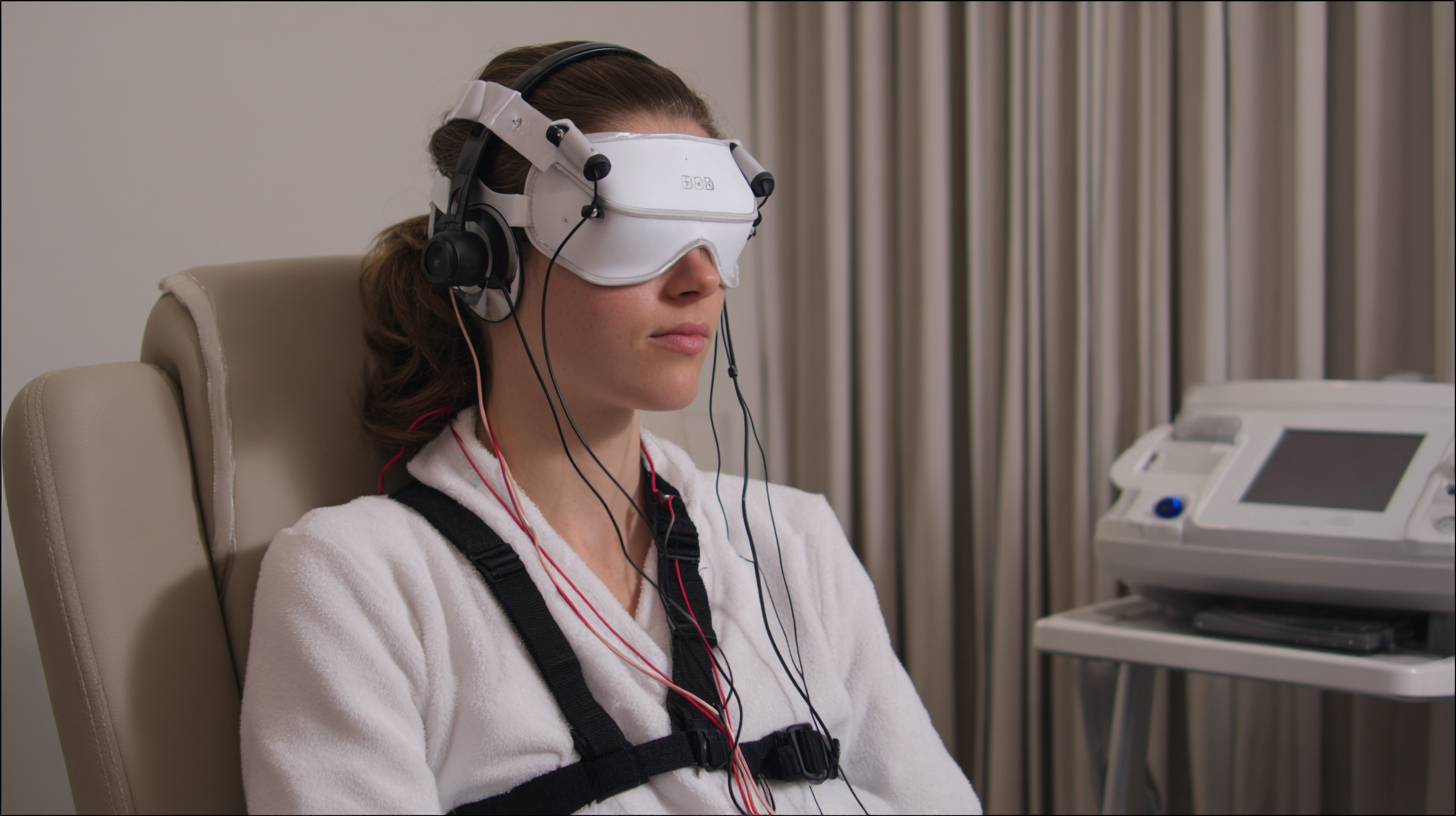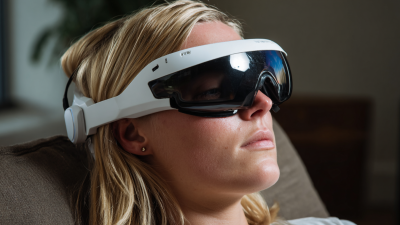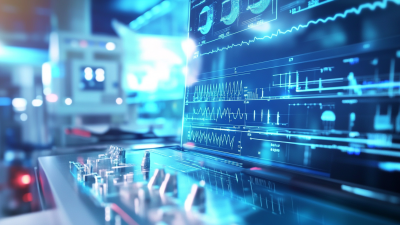Bankim Nagar, Siliguri, West Bengal
- GST NO. : 19BHDPS7640K1ZR
Unlocking the Power of Biofeedback Equipment: Enhance Your Wellness Journey Today!
In recent years, the wellness industry has witnessed remarkable growth, with the global biofeedback equipment market projected to reach $1.61 billion by 2027, expanding at a compound annual growth rate (CAGR) of 13.3% from 2020 to 2027, according to a report by Fortune Business Insights. This surge in interest can be attributed to an increasing awareness of integrative health practices and the desire for personalized health management tools. Biofeedback equipment, which allows individuals to monitor and control physiological processes through real-time data, has emerged as a transformative tool for enhancing personal wellbeing.

By utilizing feedback from the body's functions, users can develop greater self-awareness, reduce stress, and improve overall mental and physical health. As more individuals seek holistic approaches to wellness, embracing biofeedback equipment can significantly enrich their wellness journeys, providing powerful insights and strategies for personal growth and health optimization.
Understanding Biofeedback: The Science Behind Self-Regulation
Biofeedback is a therapeutic technique that leverages real-time data about physiological functions to help individuals gain greater awareness and control over their bodily processes. According to a report by the National Institutes of Health, biofeedback can significantly reduce symptoms of anxiety, chronic pain, and even migraines, with studies showing improvement in approximately 70% of case subjects. The science behind self-regulation lies in the ability to interpret this feedback, enabling individuals to modify their behavior and physiological responses towards achieving a state of balance and wellness.
The mechanisms of biofeedback are rooted in neuroplasticity, the brain's remarkable ability to reorganize itself by forming new neural connections. Research published in the Journal of Behavioral Medicine indicates that consistent biofeedback training can lead to lasting changes in brain activity associated with relaxation and emotional stability. By understanding and manipulating their physiological signals—such as heart rate variability and muscle tension—users can cultivate coping strategies and enhance their overall quality of life. This empowers them not only to address existing health issues but also to proactively maintain their well-being, making biofeedback a vital tool in the modern wellness journey.
Understanding Biofeedback: Stress Reduction Over Time
This chart represents the reduction of stress levels over a 6-week period using biofeedback techniques. The data shows a significant decrease in stress levels, indicating the effectiveness of biofeedback in enhancing wellness.
Types of Biofeedback Equipment: Choosing the Right Tools for You
When it comes to enhancing your wellness journey, biofeedback equipment offers a variety of options to cater to your individual needs. Types of biofeedback tools range from wearable devices that monitor your heart rate and muscle tension to visual feedback equipment that helps track bodily functions. These devices can empower you to gain insights into your physiological responses and guide you towards better health practices.
For instance, pelvic floor trainers utilize biofeedback techniques to assist new mothers in strengthening the muscles that support their reproductive and urinary systems. These discreet devices can include anything from weighted balls to advanced wearable technology, providing vital feedback and encouraging effective practice. Additionally, sleep trackers are becoming increasingly popular, as they harness biofeedback methods to deliver personalized insights about sleep patterns, enabling users to make informed adjustments for better rest. Ultimately, understanding the different types of biofeedback equipment available can help you select the right tools to support your wellness journey effectively.
Unlocking the Power of Biofeedback Equipment: Enhance Your Wellness Journey Today!
| Type of Biofeedback Equipment | Description | Main Uses | Ideal For |
|---|---|---|---|
| Heart Rate Variability (HRV) Monitors | Devices that measure heart rate variations to assess stress and recovery. | Stress management, performance monitoring. | Athletes, people managing stress or anxiety. |
| Galvanic Skin Response (GSR) Sensors | Devices that measure electrical conductance of the skin to assess emotional arousal. | Emotional awareness and stress evaluation. | Therapists, individuals seeking improved emotional control. |
| Electromyography (EMG) Devices | Devices that measure muscle tension and activity. | Muscle relaxation, pain management. | Individuals with chronic pain or tension-related issues. |
| Neurofeedback Devices | Devices that track brainwave patterns to promote self-regulation. | Cognitive enhancement, stress reduction. | Individuals with ADHD, anxiety, or performance issues. |
How Biofeedback Can Transform Your Mental Health and Emotional Wellness
Biofeedback is an innovative approach that empowers individuals to gain control over their mental health and emotional wellness by providing real-time feedback on physiological functions. This powerful technique enables users to observe their body’s responses, such as heart rate, muscle tension, and brain activity, thereby facilitating a deeper understanding of the mind-body connection. Through this awareness, individuals can learn to modulate stress, anxiety, and negative emotional states, enhancing their overall well-being.
As practitioners engage with biofeedback equipment, they can develop personalized strategies to cope with various mental health challenges, fostering resilience and emotional stability. Techniques such as guided breathing or progressive muscle relaxation can be integrated, helping users to actively participate in their healing process. In this way, biofeedback not only aids in symptom management but also cultivates a proactive mindset that is essential for long-term emotional wellness, making it a transformative tool in the journey toward psychological health.

Incorporating Biofeedback into Daily Life: Practical Tips for Success
Incorporating biofeedback into daily life can significantly enhance personal wellness, allowing individuals to gain control over physiological functions. According to a study published in the Journal of Neurotherapy, biofeedback techniques have shown a remarkable efficacy rate of up to 80% in reducing anxiety and stress. By utilizing biofeedback equipment, people can learn to regulate their heart rate, muscle tension, and other biological markers, leading to improved mental health and overall well-being.
**Tip 1:** Start with simple biofeedback exercises, such as heart rate monitoring. Invest in a heart rate monitor or a wearable device that provides real-time feedback. Dedicate a few minutes each day to practice deep breathing while observing your heart rate. This mindfulness practice not only calms your mind but also teaches you to consciously lower your heart rate when feeling stressed.
**Tip 2:** Integrate biofeedback into your exercise routine. Studies indicate that individuals who combine biofeedback with physical activity experience greater improvements in overall fitness and stress levels. For instance, using EMG biofeedback during strength training can help ensure correct muscle engagement and prevent injuries.
By including these practices in your daily schedule, you can create a consistent pathway to enhanced wellness and a more enriched life experience.
Success Stories: Real-Life Examples of Biofeedback Enhancing Wellness Journeys
Biofeedback is transforming the way individuals approach their wellness journeys. Through real-time data related to bodily functions such as heart rate, breathing, and muscle tension, many have found newfound control over their physical and mental states. Success stories abound, illustrating how this innovative approach can address everything from chronic pain to anxiety. For instance, Sarah, a long-time sufferer of migraines, used biofeedback equipment to learn how to manage her stress and has significantly reduced her headache frequency.

Tips for those interested in biofeedback include starting with a professional who can guide you in using the equipment effectively. Seek out certified practitioners who can provide personalized sessions and monitor your progress. Additionally, consider integrating biofeedback into your daily routine—using wearable devices that connect to a smartphone app can empower you to track your wellness metrics continuously.
Many have found that pairing biofeedback with mindfulness techniques amplifies the benefits. For example, practicing meditation or deep-breathing exercises while using biofeedback tools can enhance your awareness and help you manage stress more effectively. Jenny, a busy executive, has incorporated this blend into her life, resulting in greater work-life balance and harmony in her mental health.
Related Posts
-

Top Strategies for Integrating Biofeedback Machines into Modern Wellness Programs
-

Experience the Future of Wellness with Advanced Biofeedback Equipment Solutions
-

Ultimate Checklist for Selecting the Right Pulmonary Function Machine
-

Understanding Global Manufacturing Standards for Best EMG Equipment
-

2025 Global Trends in Healthcare Technology with Solutions for Best ECG Machines
-

Ultimate Guide to Choosing the Right Emg Machine for Your Business Needs

